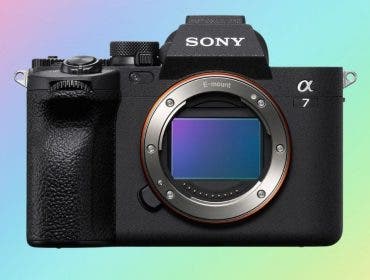Editor’s note: With this article, the Adorama Learning Center welcomes travel photography blogger and HDR expert Trey Ratcliff. Look for new articles from Trey on a regular basis at the Adorama Learning Center!
Several months ago I wrote an article in my blog that said that “DSLRs are a Dying Breed.” This resulted in a lot of hate comments from irrational people who probably have a lot of emotional baggage that isn’t connected to the issue at hand. But, I think a lot of people saw my point. In this exclusive Adorama article, let’s look at a specific example.
Right now we’re in this technology hinterland, somewhere between the transition from DSLRs to the next generation of mirrorless cameras. I still hate the name “mirrorless cameras”— it makes about as much sense as when they called an automobile a “horseless buggy.” Adorama calls ’em Compact System/Mirrorless Digital Cameras, or MILCs (Mirrorless Interchangeable Lens Compacts), and sells all of them.
Also read: “A new camera category has arrived. What shall we call it?” on the Adorama Blog.
So, I decided to buy a Sony NEX-7, which is available at Adorama (read my Sony NEX-7 Review, and watch Rich Harrington’s hands-on overview on AdoramaTV.), and it is currently my second camera. My main camera is my Nikon D800 (read my Nikon D800 Review as well as Rich Harrington’s Nikon D800 Product Review video on AdoramaTV), so, obviously, I’m still using a DSLR. But, when traveling and you need a second camera for backup, there is no need to carry around two giant DSLRs, especially when the quality of the mirrorless cameras are not much different for many sorts of shots.
In preparing for this article, I wanted to do a little side-by-side comparison between the Nikon D800 and the Sony NEX-7, both of which are available at Adorama. Rather than spout stats (which I will in a second) I wanted to show some sample photos.
You know when you go into an experiment with a certain kind of bias? This is problematic, but everyone does it. People can always find evidence for what they want to find. So I tried not to go into this with too much bias, but I was secretly hoping that the two photos from the Nikon D800 and the Sony NEX-7 would come out the same.
But, halfway through my experiment, I realized I’m one of the worst people do to lab-condition comparisons. (For that sort of thing, refer to the Adorama Learning Center’s lab test partner, DxOMark.com) And so, here are the faults with my experimentation style:
- I post-process the heck out of everything. I do this unapologetically.
- Because everything goes through many sorts of software processes, the final photo is often a mere shadow of the original creation.
- I could show you original photos, and I acknowledge that you want to see them, but I won’t. They are all what you expect and they have little to do with the final result, which is 100% more important to me. The final souffle is more important than the oven used to make it.
- I am also well known for using HDR. Learn more about HDR.
Okay, so after having said all that, let’s look at a Sony NEX-7 shot of Queenstown, New Zealand (my new home!) below. The original is 5784×3485 (cropped a bit) 11mm (16mm effectively on the Sony 10-18mm lens), f/9, ISO 100. Click on the image to see it full-sized. Keep in mind the full image is around 10.5MB.
Now, let’s look at a Nikon D800 photo. 7546×4787 (cropped a bit), 19mm (14-24mm f/2.8 lens), f/8, ISO 200. Again, click on the image to see it full-sized:
So, really I’m pretty happy with them both, but I’m happier with the Nikon D800 photo. They were taken about 15 mins apart, so the light is a bit different. Also I processed it a little differently. Again, this is why my experimental style is so random.
However, most shots exist in a vacuum, and if I had never taken the Nikon D800 photo, I’d be perfectly happy with the Sony NEX-7. In fact, for about a month my Nikon D800 was broken until I bought a second new one from Adorama! During that month, I used my NEX-7 a lot, and I was very happy with the results.
Shall we look quickly at the most important specs (to me)? The Sony NEX-7, compared to the Nikon D800:
 24 MP
24 MP- NEX 7 is 5.9x smaller than D800
- Flip-out screen
- OLED viewfinder (allowing you to see more data-on-screen – I love it)
- 2.6x lighter
- 10 fps (instead of 4 fps on the d800)
- Almost a third the price!
 Here’s where the Nikon D800 excels over the Sony NEX-7:
Here’s where the Nikon D800 excels over the Sony NEX-7:
- 36.2 MP !!!
- Faster autofocus
- Full-frame sensor
- Way more lenses
- Weather-sealed
There are a hundred more little differences, but these are the most important to me. So, as you can see, having both gives you a nice little one-two punch! And, if I only had budget for one, I may just go for the Sony NEX-7.
I often walk around with two cameras. I use my Nikon D800 for landscape/architecture shots. Over my shoulder, I have my Sony NEX-7. I put on a Leica-mount f/1.2 lens for people shots and whatnot. It’s so quick and handy for this. I hate changing lenses, so it’s good to have a lighter and very competent camera for this sort of thing.
Anyway, I hope this gives you a little more insight into my camera gear and why I carry around what I carry around! Below, check out more favorite photos from the Sony NEX-7. Many of them were taken during that month when my Nikon D800 was broken!











